Review – Cronos: Awakening to a New Era

Enter Here and Abandon All Hope
Bloober Team, established in 2008 and actively developing games since 2010, gained substantial attention in 2016 with the release of Layers of Fear. This marked the studio’s commitment to psychological horror games, earning them a noteworthy reputation in the genre. Their growing prominence led to a collaboration with Konami on the Silent Hill 2 remake last year. Within a decade, Bloober Team transitioned from a small indie developers to prominent figures in European game development. Naturally, any project released after reimagining James’ nightmare would capture widespread attention.
Following the mixed reviews of The Medium in 2019 and initiating a partnership with Konami for the Silent Hill 2 remake, Bloober Team shifted their focus. Rather than creating niche horror games, their aim was the global market. While this shift might appear negative, it allowed them to explore ideas beyond their previous projects. Thus, in 2021, they embarked on creating Cronos: The New Dawn, a title that, inspired more by Resident Evil than Silent Hill, delves into traditional survival horror with unique concepts.
Just a year after its reveal, Cronos: The New Dawn is in our hands, poised as a must-play experience for survival horror enthusiasts. Inspired by a collective fear in Poland, Bloober Team’s work is among 2025’s significant releases. If successful, it could elevate the team to a popularity comparable to CD Projekt Red. Does Cronos: The New Dawn meet expectations? Does the European studio offer original ideas, or is it a collection of existing genre games? Find out in our Atomix Review.
Our Purpose Unveiled
Bloober Team’s original works often draw inspiration from real events or other games. Cronos: The New Dawn transports players to an alternate reality in Nowa Huta, a Kraków district in Poland, plagued by an infection transforming humanity into a grotesque mass seeking unity. The game presents intriguing questions, offering some answers while leaving much to player interpretation, a deliberate choice. Initially presented as a mission from an unknown entity, it evolves into an exploration of personality, causality, and time loops, infused with Bloober Team’s signature psychological horror.

Cronos: The New Dawn casts us into a future where humanity has fallen due to a mysterious infection dubbed “the Change,” transforming people into creatures known as Orphans. We assume the role of The Traveler, a mysterious entity tasked with collecting essences of certain individuals for The Collective. To achieve this, we travel back to the 1980s, thanks to the Anomalies, navigating before, during, and after the epidemic. Our journey, centered around Weronika Kamiński, a scientist of unexpected significance, reveals itself to be more than a mere task.
Cronos: The New Dawn is a terrifying nightmare. The engaging storyline hooks players from the start with its mysteries. Bloober Team immerses us in a hostile world that, although familiar, is significantly altered. The game employs classic genre narrative elements with precision, painting a vivid picture of a world long gone.

Cronos: The New Dawn thrives on varied interactions. The world comes alive through diaries, newspapers, and notes scattered about, hinting at the Poland epidemic in 1980, a steel mill accident, and a mysterious visitor heralding the world’s end. Each information fragment builds an incomplete puzzle, urging players to fill gaps with potentially correct theories.
Maintaining a constant sense of fear, the game is structured in distinct sections, each constructing a nightmare scene. One second zone involves an abandoned steel mill, adorned with banners demanding workers’ release. Information is unearthed about employees trapped by a mysterious disease, and hints about a visitor piquing government interest. A palpable tension persists as players progress through scenarios, culminating in fear transcending controls and The Traveler’s experiences.

The game leverages time travel to explore pre-, during, and post-epidemic locales, enhancing the narrative with additional context. Returning to the steel mill, reports detail employees’ inappropriate discoveries, building anticipation for the unknown as players approach critical moments. A constant hostile aura paralyzes players as they try to comprehend impending events.
Beyond its compelling narrative, Cronos: The New Dawn is a character-driven tale filled with enigmas. Questions regarding The Traveler, the Change, and the mission’s true nature abound, leaving room for personal conclusions. The protagonist’s transformation, affected by various narrative levels, challenges perceptions, questioning the true identity beneath the helmet.

Echoing how The Witcher introduces Eastern European folklore to showcase Polish identity, Cronos: The New Dawn employs collective fears to reflect regional culture and society. The story intricately weaves tales of socialist workers’ revolts, state pressure to align thoughts, and a steel mill incident reminiscent of Chernobyl. Balancing personal narratives with cultural insights, the game invites Polish audiences, and perhaps others, to relate to underlying fears.
Cronos: The New Dawn offers something for everyone. The engaging plot features a protagonist wth significant growth, while the world naturally unfolds through scattered information pieces illuminating pre-Change humanity. Although player interpretation might not appeal to all, it remains a haunting experience lingering long after the credits roll.
Flesh and Metal
On the surface, Cronos: The New Dawn embraces survival horror tropes to craft its world. Bloober Team innovates beyond these familiar elements, shaping a unique representation of settings seen countless times in the genre. Through a retrofuturistic aesthetic and brutalist architecture, Poland is depicted in a way that highlights the Soviet era by combining concrete with flesh, creating a visually striking result.

The world is truly unforgiving. Thick fog obstructs vision, and power outages envelop buildings in darkness. While a flashlight reveals glimpses of terror, the persistent feeling that danger lurks just beyond our peripheral vision is ever-present. This atmosphere is magnified as environments decay, overtaken by flesh, creating the impression of entering a massive living organism. Soviet architecture slowly succumbs to encompassing flesh.
Such atmosphere extends to enemies, modeled after John Carpenter’s The Thing. Less bone and skin, creatures sport irregular, flesh-based movements, hinting at individuality and collective nature. A unique system allows them to absorb others for strength, resulting in monstrous evolutionary growth portrayed through unnaturally developed designs.

Small headless creatures sprout spines, while others gain corroded flesh armor. However, a consistent feature remains—their eyes. Glowing white dots stand out amidst decayed red flesh, hauntingly trailing players wherever they go. Even motionless orphans exude terror; their defeated state offers no assurance they won’t awaken moments later to resume offense.
The game’s terror stems partly from classic survival horror settings, such as police stations, hospitals, and churches. These areas transcend basic elements, as flesh increasingly dominates, altering them substantially. The steel mill, serving as the infection and anomaly epicenter, is a standout zone. Displacing the usual blue sky is an ominous orange hue, revealing temporal rifts altering gravity—a haunting Chernobyl reminder.

The game juxtaposes these frightening scenarios with time travel to eras preceding the Change. After prolonged immersion in decaying, flesh-infested settings, returning to a vibrant world is unsettling. Pre-Chang electric illumination contrasts the protagonist’s era, while snowflakes accentuate humanity’s final Christmas eve—a poignant despair strategically sprinkled throughout the narrative.
Aligning with The Traveler’s distinct design, the protagonist’s portrayal sharply contrasts enemies’. Their appearance suggests a space entity—gloves crafted for handling plutonium, signature heavy boots, and life-sustaining tubes. Encased in a submarine-like suit, protection from infection matches isolation. The viewer never glimpses beneath the imposing helmet. Human or otherwise, her identity is expressed through articulated gestures straddling robotic and natural states.

Vibrant personality abounds in Cronos: The New Dawn. Environments, antagonists, and characters stand out, even when Bloober Team’s inspirations are evident. Despite technical hurdles, like occasional frame drops or extended loading in fast playthroughs, the Unreal Engine 5 crafted world remains impressive. Whether slow-paced or fast, the game’s atmosphere delivers stable thrills.

Cronos: The New Dawn is a visual delight, contrasting flesh and metal to impart distinctive character. Despite performance issues in the initial version, Bloober Team crafts a terrifyingly well-designed horror. Narrative concepts springboarding familiar ideas evolve into a title boasting unique articulation and gripping themes, conjuring entities haunting in nightmares long after completion.
Science Fiction and Frights
As a horror game, Cronos: The New Dawn emphasizes its sound design. Music complements action and transports players to a sci-fi realm, while voice acting breathes life into supporting characters. The sound design evocatively traps players in a paranoia-inducing hostile world.

An unexpected standout is the soundtrack’s strong emphasis on synthesizers. While tension-building tracks alert players to impending danger, climactic narrative moments shine with Arkadiusz Reikowski’s melancholic compositions, capturing humanity’s last hours. Spatial sci-fi tones, reminiscent of Stranger Things, enhance the anomaly-rich steel mill setting. This distinctive auditory element distinguishes the game within its genre.
Despite Cronos: The New Dawn protagonists’ enclosure in metallic suits, their voices exude humanity. The cast excels in portraying initially simple-seeming characters who transform before the audience. Although spoiler-avoidance precludes detail, The Traveler’s voice is noteworthy. Her evolving performance shifts from robotic to emotionally charged by the game’s end. This gradual shift reveals curiosity fueling her transformation, hinting at the mask’s identity.

Nonetheless, the true star is sound design. Integral to the experience is the ambient noise hinting at unseen presences. Players are never alone; fleshy environments emit perpetual dread. Defeated Orphans’ remnants continue squirming and resound, blurring death’s finality. Conversely, weapons embody a fusion of familiar and otherworldly, audible in explosions and gunshots.
Cronos: The New Dawn excels sonically. Each element thrives, enhancing the overall game and creating a uniquely terrifying atmosphere that not only enhances narrative but defines the experience. The sound work deftly transitions from a game’s forefront to a supportive role, enriching gameplay intricately.
Greatest Hits
Cronos: The New Dawn epitomizes survival horror. Drawing from successful games like Resident Evil 4 and Dead Space, Bloober Team delivers an enduringly relevant adventure. The studio furnishes a recognizable, yet distinct game enriched by its take on familiar conventions, devoid of revolutionary innovation. Veterans may find elements predictable, yet their execution ensures an engaging experience despite following a tried-and-true model.

Inspired by genre staples, Cronos: The New Dawn tasks players with exploring interconnected environments, solving puzzles, and battling horrific foes. It features third-person shooting with varied weapons and two melee options, limited resources necessitating strategic inventory management for firearms, ammunition, and crucial items. Though familiar to survival horror fans, these mechanics are revitalized by the game’s execution.
Interesting nuances include level design resembling haunted houses, encouraging constant movement through tight encounters. Elaborate designs balance exploration and optional item quests, yet players focusing on the core experience are not penalized for bypassing superfluous exploration.

The direct, thrilling adventure seamlessly integrates familiar gameplay with engaging combat dynamics. Though a third-person shooter, Cronos: The New Dawn introduces charged shots—powerful but time-consuming, upping tension in monster battles.
A charged shot can halve a basic Orphan’s defeat—two of these can compensate for scarce resources. Deciding between regular rapid-fire or patience for more effective charged shots is crucial. As challenges mount, enemies increasingly resist.

Cronos: The New Dawn‘s major proposition involves Orphans fusing for power. Merged foes escalate threats with evolving abilities, adapting to players’ tactics. While stage-one Orphans are susceptible to charged shots, second-tier foes immobilize with entrails, and third-tier versions don protective flesh armor, complicating engagement. Fusion ultimately results in formidable adversaries, compelling retreat or enduring lethal danger.
This system cleverly amplifies existing threats. Orphans incorporate defeated foes and ambient bodies, potential fusion opportunities demanding constant vigilance—not only immediate threats but idle bodies could become vexing enemies, heightening every encounter’s stakes.

Weapon economy is paramount. Headshots maximize damage, but targeting legs temporarily incapacitates foes, opening melee or kick opportunities for minimal yet decisive damage distinctions. Resource scarcity means evaluating weapon efficacy per Battle to preserve survival likelihood. Additionally, incendiary bombs eternally dispose of remnants preventing sinister fusion.
The game offers gear and chemical crafting, addressing diverse combat scenarios instantly. A three-essence capacity provides limited player perks, supporting combat strategies. Furthermore, resource allocation enhances inventory space, health, and weapon damage within a classic progression system. Strategic juggling maintains tension without reinventing the genre but presents peak execution.

Despite familiarity, Cronos: The New Dawn masterfully delivers. Battles demand sacrifice—trading precious capsules for survival, risking wasted bullets. Fear pervades relentlessly, heightening frenzied engagements and unsettling locales. Even non-combat sequences induce dread, juxtaposed against atmospheric feats and unpredictable foes.
Some aspects falter—puzzles lack, enemy patterns can be exploited, and familiarity eventually breeds comfort. Yet fresh elements, specifically charged shots and enemy fusion, imbue enough complexity to compel perpetual player awareness. Bloober Team embraces clear influences, expertly crafting an engaging, chilling game.

Cronos: The New Dawn offers a spine-chilling experience. It enhances the survival horror formula with engaging shooting mechanics and unique enemy behavior. Bloober Team confidently draws on established elements, delivering an absorbing, frightfully mesmerizing journey.
One of the Year’s Best

The Polish studio impressively produces a universally appealing experience with Cronos: The New Dawn. It appeals to genre fans with its hook-filled narrative, character depth, and cryptic questions for subjective player resolution. Rich world-building promises potential sequels.
Visually, Cronos: The New Dawn revitalizes genre tropes with retrofuturist style and brutalist architecture. Its haunting world immerses players in unease, highlighting character and enemy design through visual metaphors.
Each sonic element excels. Voice acting humanizes voiceless characters, the soundtrack introduces sci-fi allure, and design fuses ambiance into living organs. Footsteps resonate, vitalizing environments while maintaining unsettling charm.
Though drawing from genre staples, Cronos: The New Dawn masterfully refines successful mechanics, notably unique combat depth. It masterfully delivers unexpected thrills and creeping terror.
Post-Silent Hill 2 remake fears regarding originality dissolve with Cronos: The New Dawn. Bloober Team proves capable beyond expectations. This release situates them as leading European developers, adding polished, franchise-worthy production to their kitt. This is indisputably a standout game of the year.
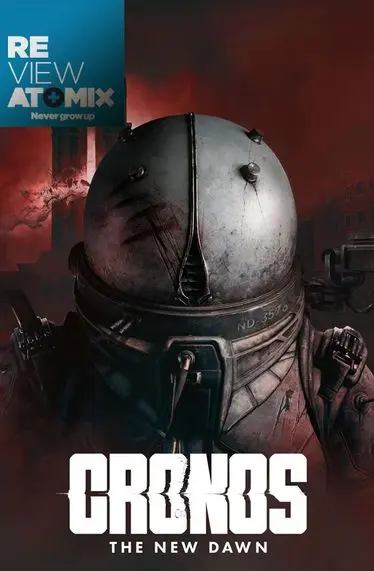



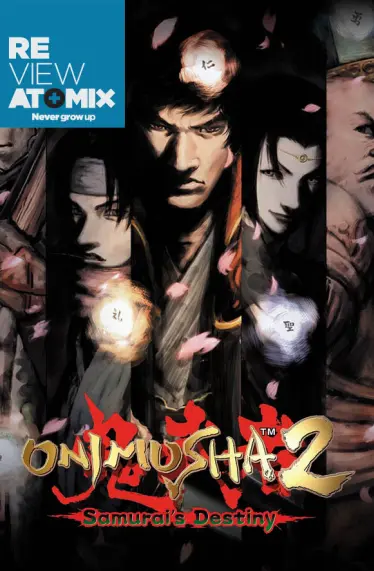
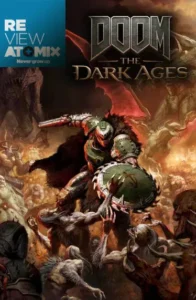


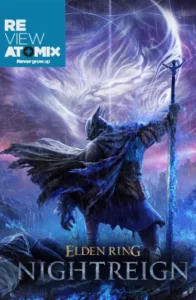

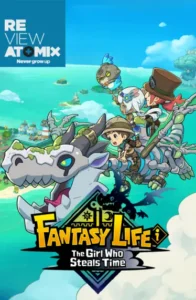


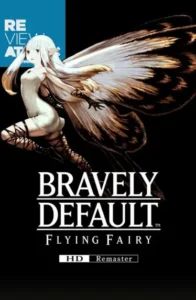
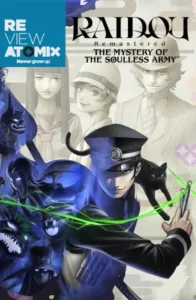
Post Comment